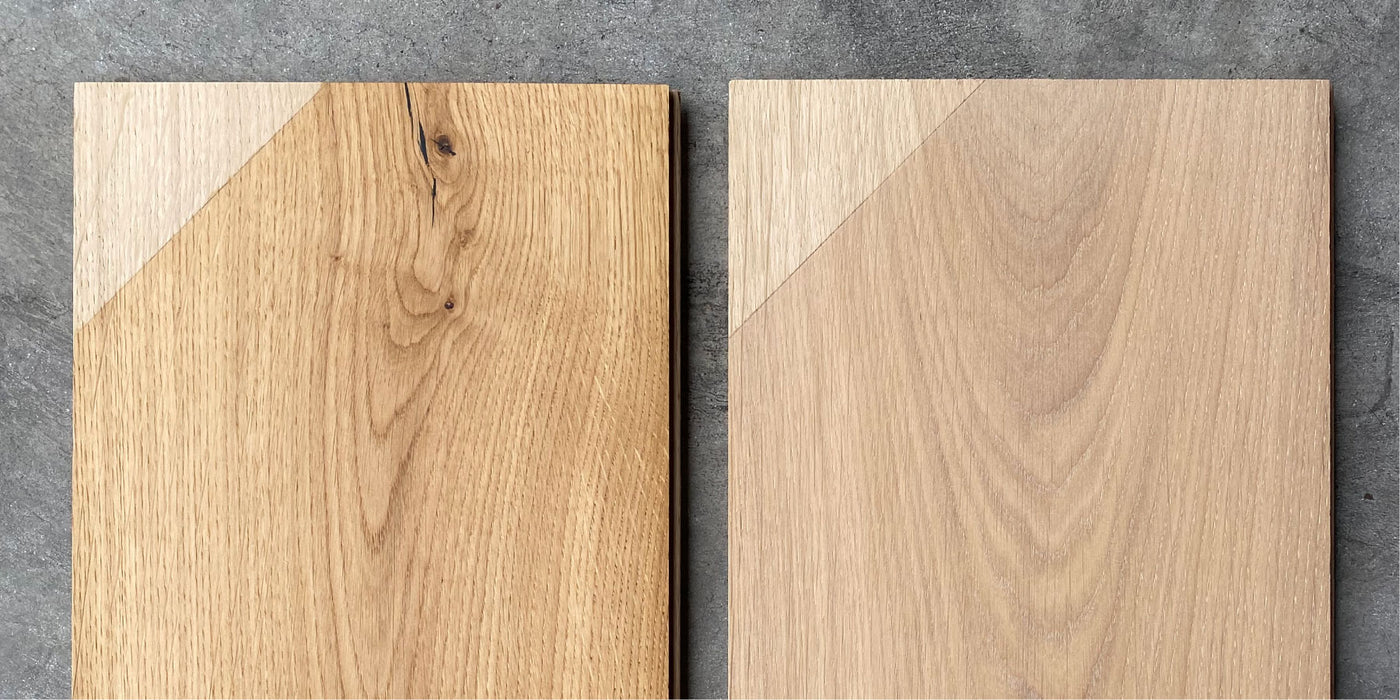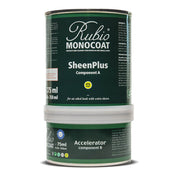Choosing the correct wood finish color can be a fun yet challenging process.
Today we are going to address the difference between Rubio Monocoat colors Pure and Natural.
Simply put, Pure contains no pigment and Natural contains a creamy whitish/yellowish pigment.
Let’s dive a little deeper.
Which one is clear?
Believe it or not, neither!
While Pure contains no pigment, clear is not the best description because Oil Plus 2C is a linseed oil based product. Linseed oil has a naturally occurring color to it which will enrich/darken the wood compared to its raw state.
As a matter of fact, all oil based products (ours or others) will naturally enrich the wood.

Pure on White Oak flooring
How to avoid the rich look of Pure upon application and keep the wood looking light
Keeping your wood looking natural requires introducing just enough pigment to off-set the enriching/darkening caused by using an oil-based finish.
See below photo for example.

3 color options (Pure, White 5% and Natural) shown on White Oak flooring.
Here are common solutions to neutralizing the richening that occurs when applying oil-based finish to a few popular wood types. Please note, due to the natural variation that occurs in wood, these are starting points and may require some modification.
- White Oak: you can use the color Natural or White 5% to keep the lighter look without the rich look.
- Red Oak: you can use Precolor Easy Mint White to neutralize the pink/red tones of the red oak and then apply the Oil Plus 2C White 5% to it.
- Walnut: (because it is so dark on its own) you can use Pure to keep it looking as close to unfinished as possible. A slight darkening will occur, but this is typically desired.
Always sample
Of course the best way to figure out which product is best for you is to sample various colors on your species of wood with your wood prep. This will give you the best idea of what the finished product will look like and will help you from second guessing your decision after the fact. And that is always a good thing.
Check out our guide on how to properly make wood samples to show the best representation of what the final result will look like.

